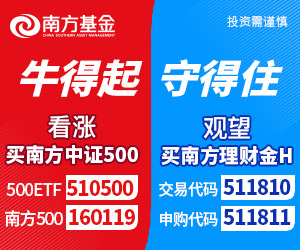Results Of The Global Phase 3 Trial, Now Published In Clinical Infectious Diseases, Show For The Primary Endpoint, LIVTENCITY Was Statistically Superior To Conventional Therapies At Study Week 81
For The Key Secondary Endpoint, LIVTENCITY Was Statistically Significant To Conventional Therapies In A Composite Achievement Of CMV DNA Level < The Lower Limit Of Quantification (LLOQ) And Symptom Control§ At Week 8 With Maintenance Through Week 161
In The SOLSTICE Study, A Higher Proportion Of Patients In the Conventional Therapies Group Discontinued Study Medication Due To An Adverse Event Compared To The LIVTENCITY Group
OSAKA, Japan & CAMBRIDGE, Mass. -- (BUSINESS WIRE) --
Takeda Pharmaceutical Company Limited (TSE:4502/NYSE:TAK) (“Takeda”) today announced that the data from the pivotal Phase 3 SOLSTICE clinical trial of LIVTENCITY™ (maribavir, TAK-620) in post-transplant refractory† CMV infections with or without resistance‡ (R/R) were published in the journal of Clinical Infectious Diseases (CID). The manuscript is available online and will be included in a future print edition of CID, the official peer-reviewed journal of the Infectious Diseases Society of America.1 The SOLSTICE study primary endpoint was met, with 55.7% (131/235) of adult patients on LIVTENCITY achieving confirmed CMV DNA level below the lower limit of quantification (<LLOQ, i.e. <137 IU/mL) at the end of Study Week 8 (end of treatment phase) in comparison with 23.9% (28/117) of patients on conventional antiviral therapies (one or a combination of ganciclovir, valganciclovir, foscarnet or cidofovir); adjusted difference [95% CI]: 32.8% [22.80 to 42.74]; P<0.001.1* The key secondary endpoint of the composite achievement of CMV DNA level <LLOQ and symptom control§ at Week 8 maintained through Week 16 was met, with a higher proportion of patients in the LIVTENCITY arm (18.7%, 44/235) meeting the endpoint compared to those on conventional antiviral therapies (10.3%, 12/117); adjusted difference [95% CI]: 9.5% [2.02 to 16.88]; P=0.013.1
“We are pleased that the SOLSTICE trial, which compared LIVTENCITY to conventional antiviral treatments for transplant patients with refractory/resistant cytomegalovirus infections, met its primary endpoint of statistical superiority, as well as the key secondary endpoint,” said Obi Umeh, MD, Vice President and Maribavir Global Program Leader, Takeda. “As we continue to study maribavir, we remain steadfast in our research to provide physicians and patients with a treatment that potentially redefines post-transplant CMV.”
Rates of treatment-emergent adverse events (TEAEs) were similar between groups (LIVTENCITY, 97.4%; conventional antiviral therapies, 91.4%). A higher proportion of subjects in the conventional antiviral therapies group discontinued study medication due to an adverse event (32%, 37/116) compared to the LIVTENCITY group (13%, 31/234). One patient per group had a fatal treatment-related treatment-emergent adverse event; however, within the LIVTENCITY group, the event was assessed by the sponsor as being unrelated to LIVTENCITY. All-cause mortality was similar in each treatment group (conventional antiviral therapies 11%, 13/117; LIVTENCITY 11%, 27/235).1
“Managing CMV post-transplant requires careful balance between managing side effects and reducing viral load,” said study co-author Fernanda Silveira, MD, MS, Associate Professor of Medicine, Clinical Operations Director for Transplant Infectious Diseases, University of Pittsburgh and UPMC. “The study data show LIVTENCITY achieved confirmed CMV DNA level below the lower limit of quantification in post-transplant CMV refractory/resistant infected patients.”
LIVTENCITY is currently approved for use only in the U.S. for the treatment of adults and pediatric patients (12 years or older and weighing at least 35 kg) with post-transplant CMV infection/disease that is refractory to treatment (with or without genotypic resistance) with ganciclovir, valganciclovir, cidofovir or foscarnet.2
The publication can be accessed here: https://academic.oup.com/cid/advance-article/doi/10.1093/cid/ciab988/6448443.
About Cytomegalovirus
CMV is a beta herpesvirus that commonly infects humans; serologic evidence of prior infection can be found in 40%-100% of various adult populations.3 CMV typically resides latent and asymptomatic in the body but may reactivate during periods of immunosuppression. Serious disease may occur in individuals with compromised immune systems, which includes patients who receive immunosuppressants associated with various types of transplants including hematopoietic cell transplant (HCT) or solid organ transplant (SOT).4,5 Out of the estimated 200,000 adult transplants per year globally, CMV is one of the most common viral infections experienced by transplant recipients, with an estimated incidence rate between 16-56% in SOT recipients and 30-70% in HCT recipients.5–10
In transplant recipients, reactivation of CMV can lead to serious consequences including loss of the transplanted organ and, in extreme cases, can be fatal.11,12 Existing therapies to treat post-transplant CMV infections may demonstrate serious side effects that require dose adjustments or may fail to adequately suppress viral replication.13–15 Additionally, existing therapies may require or prolong hospitalization due to administration.13,14
About LIVTENCITY (maribavir)
LIVTENCITY (maribavir), an orally bioavailable anti-CMV compound, is the first and only antiviral agent that targets and inhibits the pUL97 protein kinase and its natural substrates.2 It is approved in the U.S. for the treatment of adults and pediatric patients (12 years of age or older and weighing at least 35 kg) with post-transplant cytomegalovirus (CMV) infection/disease that is refractory to treatment (with or without genotypic resistance) with ganciclovir, valganciclovir, cidofovir or foscarnet. For more information on LIVTENCITY, visit LIVTENCITY.com.2
About Takeda’s SOLSTICE Trial
The TAK-620-303 (SOLSTICE) trial (NCT02931539) was a multicenter, randomized, open-label, active-controlled superiority trial to assess the efficacy and safety comparing treatment with either LIVTENCITY (maribavir) or conventional antiviral therapy in 352 hematopoietic cell transplant and solid organ transplant recipients with CMV infection refractory, with or without resistance, to one or a combination of the conventional antiviral therapies: ganciclovir, valganciclovir, foscarnet or cidofovir. Adult patients underwent a 2-week screening period, followed by randomization 2:1 to LIVTENCITY (n=235) (400 mg, twice daily) or conventional antiviral therapies (n=117) (as dosed by the investigator) for up to 8-weeks. After completion of the treatment period, subjects entered a 12-week follow-up phase.1
The trial’s primary endpoint was confirmed CMV DNA level <LLOQ (lower limit of quantification, [i.e. <137 IU/mL] in 2 consecutive samples separated by at least 5 days as assessed by COBAS® AmpliPrep/COBAS® TaqMan® CMV test at the end of Week 8). The key secondary endpoint was CMV DNA level <LLOQ and CMV infection symptom control at the end of Study Week 8 with maintenance of this treatment effect through Study Week 16.1
INDICATION
LIVTENCITY is indicated for the treatment of adults and pediatric patients (12 years of age and older and weighing at least 35 kg) with post-transplant cytomegalovirus (CMV) infection/disease that is refractory to treatment (with or without genotypic resistance) with ganciclovir, valganciclovir, cidofovir or foscarnet.2
IMPORTANT SAFETY INFORMATION
Risk of Reduced Antiviral Activity When Co-administered with Ganciclovir and Valganciclovir
LIVTENCITY may antagonize the antiviral activity of ganciclovir and valganciclovir by inhibiting human CMV pUL97 kinase, which is required for activation/phosphorylation of ganciclovir and valganciclovir. Coadministration of LIVTENCITY with ganciclovir or valganciclovir is not recommended.
Virologic Failure During Treatment and Relapse Post-Treatment
Virologic failure due to resistance can occur during and after treatment with LIVTENCITY. Virologic relapse during the posttreatment period usually occurred within 4-8 weeks after treatment discontinuation. Some maribavir pUL97 resistance-associated substitutions confer cross-resistance to ganciclovir and valganciclovir. Monitor CMV DNA levels and check for maribavir resistance if the patient is not responding to treatment or relapses.
Risk of Adverse Reactions or Loss of Virologic Response Due to Drug Interactions
The concomitant use of LIVTENCITY and certain drugs may result in potentially significant drug interactions, some of which may lead to reduced therapeutic effect of LIVTENCITY or adverse reactions of concomitant drugs. Consider the potential for drug interactions prior to and during LIVTENCITY therapy; review concomitant medications during LIVTENCITY therapy and monitor for adverse reactions. Refer to the full prescribing information of LIVTENCITY for important drug interactions.
Maribavir is primarily metabolized by CYP3A4. Drugs that are strong inducers of CYP3A4 are expected to decrease maribavir plasma concentrations and may result in reduced virologic response; therefore, coadministration of LIVTENCITY with these drugs is not recommended, except for selected anticonvulsants.
Use With Immunosuppressant Drugs
LIVTENCITY has the potential to increase the drug concentrations of immunosuppressant drugs that are CYP3A and/or P-gp substrates where minimal concentration changes may lead to serious adverse events (including tacrolimus, cyclosporine, sirolimus and everolimus). Frequently monitor immunosuppressant drug levels throughout treatment with LIVTENCITY, especially following initiation and after discontinuation of LIVTENCITY and adjust immunosuppressant dose, as needed.
Adverse Reactions
The most common adverse events (all grades, >10%) in subjects treated with LIVTENCITY were taste disturbance, nausea, diarrhea, vomiting, and fatigue.
Please click for Full Prescribing Information.
About Takeda Pharmaceutical Company Limited
Takeda Pharmaceutical Company Limited (TSE: 4502/NYSE: TAK) is a global, values-based, R&D-driven biopharmaceutical leader headquartered in Japan, committed to discover and deliver life-transforming treatments, guided by our commitment to patients, our people and the planet. Takeda focuses its R&D efforts on four therapeutic areas: Oncology, Rare Genetics and Hematology, Neuroscience, and Gastroenterology (GI). We also make targeted R&D investments in Plasma-Derived Therapies and Vaccines. We are focusing on developing highly innovative medicines that contribute to making a difference in people’s lives by advancing the frontier of new treatment options and leveraging our enhanced collaborative R&D engine and capabilities to create a robust, modality-diverse pipeline. Our employees are committed to improving quality of life for patients and to working with our partners in health care in approximately 80 countries and regions. For more information, visit https://www.takeda.com.
Important Notice
For the purposes of this notice, “press release” means this document, any oral presentation, any question and answer session and any written or oral material discussed or distributed by Takeda Pharmaceutical Company Limited (“Takeda”) regarding this release. This press release (including any oral briefing and any question-and-answer in connection with it) is not intended to, and does not constitute, represent or form part of any offer, invitation or solicitation of any offer to purchase, otherwise acquire, subscribe for, exchange, sell or otherwise dispose of, any securities or the solicitation of any vote or approval in any jurisdiction. No shares or other securities are being offered to the public by means of this press release. No offering of securities shall be made in the United States except pursuant to registration under the U.S. Securities Act of 1933, as amended, or an exemption therefrom. This press release is being given (together with any further information which may be provided to the recipient) on the condition that it is for use by the recipient for information purposes only (and not for the evaluation of any investment, acquisition, disposal or any other transaction). Any failure to comply with these restrictions may constitute a violation of applicable securities laws.
The companies in which Takeda directly and indirectly owns investments are separate entities. In this press release, “Takeda” is sometimes used for convenience where references are made to Takeda and its subsidiaries in general. Likewise, the words “we”, “us” and “our” are also used to refer to subsidiaries in general or to those who work for them. These expressions are also used where no useful purpose is served by identifying the particular company or companies.
Forward-Looking Statements
This press release and any materials distributed in connection with this press release may contain forward-looking statements, beliefs or opinions regarding Takeda’s future business, future position and results of operations, including estimates, forecasts, targets and plans for Takeda. Without limitation, forward-looking statements often include words such as “targets”, “plans”, “believes”, “hopes”, “continues”, “expects”, “aims”, “intends”, “ensures”, “will”, “may”, “should”, “would”, “could” “anticipates”, “estimates”, “projects” or similar expressions or the negative thereof. These forward-looking statements are based on assumptions about many important factors, including the following, which could cause actual results to differ materially from those expressed or implied by the forward-looking statements: the economic circumstances surrounding Takeda’s global business, including general economic conditions in Japan and the United States; competitive pressures and developments; changes to applicable laws and regulations, including global health care reforms; challenges inherent in new product development, including uncertainty of clinical success and decisions of regulatory authorities and the timing thereof; uncertainty of commercial success for new and existing products; manufacturing difficulties or delays; fluctuations in interest and currency exchange rates; claims or concerns regarding the safety or efficacy of marketed products or product candidates; the impact of health crises, like the novel coronavirus pandemic, on Takeda and its customers and suppliers, including foreign governments in countries in which Takeda operates, or on other facets of its business; the timing and impact of post-merger integration efforts with acquired companies; the ability to divest assets that are not core to Takeda’s operations and the timing of any such divestment(s); and other factors identified in Takeda’s most recent Annual Report on Form 20-F and Takeda’s other reports filed with the U.S. Securities and Exchange Commission, available on Takeda’s website at: https://www.takeda.com/investors/sec-filings/ or at www.sec.gov. Takeda does not undertake to update any of the forward-looking statements contained in this press release or any other forward-looking statements it may make, except as required by law or stock exchange rule. Past performance is not an indicator of future results and the results or statements of Takeda in this press release may not be indicative of, and are not an estimate, forecast, guarantee or projection of Takeda’s future results.
Medical information
This press release contains information about products that may not be available in all countries, or may be available under different trademarks, for different indications, in different dosages, or in different strengths. Nothing contained herein should be considered a solicitation, promotion or advertisement for any prescription drugs including the ones under development.
§ CMV infection symptom control was defined as resolution or improvement of tissue-invasive disease or CMV syndrome for symptomatic patients at baseline, or no new symptoms for patients who were asymptomatic at baseline
* The difference in proportion of responders between treatment groups was obtained using Cochran-Mantel-Haenszel (CMH) weighted average across all strata and tested using stratum-adjusted CMH method, with transplant type and baseline plasma CMV DNA concentration as two stratification factors
† Refractory defined as documented failure to achieve >1 log10 decrease in CMV DNA level in whole blood or plasma after a 14 day or longer treatment period with IV ganciclovir/oral valganciclovir, IV foscarnet, or IV cidofovir
‡ Resistant defined as refractory CMV and documentation of >1 CMV genetic mutations associated with resistance to ganciclovir, valganciclovir, foscarnet, and/or cidofovir
References
- Avery RK, Alain S, Alexander BD, et al. Maribavir for Refractory Cytomegalovirus Infections With or Without Resistance Post-Transplant: Results From a Phase 3 Randomized Clinical Trial. Clin Infect Dis. Published online December 2, 2021. doi.org/10.1093/cid/ciab988.
- USPI. Takeda Internal Communication (TAK620-INT) Manufacturing Information. November 2021. 2021 Takeda Pharmaceuticals USA Inc All rights reserved.
- Krech U. Complement-fixing antibodies against cytomegalovirus in different parts of the world. Bull WHO. 1973;49:103-106.
- de la Hoz R. Diagnosis and treatment approaches to CMV infections in adult patients. J Clin Virol. 2002;25:S1-S12.
- Azevedo L, Pierrotti L, Abdala E, et al. Cytomegalovirus infection in transplant recipients. Clinics. 2015;70(7):515-523. doi:10.6061/clinics/2015(07)09.
- World Health Organization. International Report on Organ Donation and Transplantation Activities- Executive Summary 2018.; 2020. Accessed November 11, 2021. http://www.transplant-observatory.org/wp-content/uploads/2020/10/glorep2018-2.pdf.
- Niederwieser D, et al. Blood 2019;134(supplement 1):2035.
- Razonable RR, Eid AJ. A Viral infections in transplant recipients. Minerva Med. 2009;100(6):23.
- Styczynski J. Who Is the Patient at Risk of CMV Recurrence: A Review of the Current Scientific Evidence with a Focus on Hematopoietic Cell Transplantation. Infect Ther. 2018;7:1-16.
- Cho S-Y, Lee D-G, Kim H-J. Cytomegalovirus Infections after Hematopoietic Stem Cell Transplantation: Current Status and Future Immunotherapy. Int J Mol Sci. 2019;20(2666):1-17.
- Fishman JA. Infection in Solid-Organ Transplant Recipients. N Engl J Med. Published online 2007:14.
- Kenyon M, Babic A, eds. The European Blood and Marrow Transplantation Textbook for Nurses. Springer International Publishing; 2018. doi:10.1007/978-3-319-50026-3.
- Martín-Gandul C, Pérez-Romero P, González-Roncero FM, et al. Clinical impact of neutropenia related with the preemptive therapy of CMV infection in solid organ transplant recipients. J Infect. 2014;69(5):500-506. doi:10.1016/j.jinf.2014.07.001.
- Chemaly RF, Chou S, Einsele H, et al. Definitions of Resistant and Refractory Cytomegalovirus Infection and Disease in Transplant Recipients for Use in Clinical Trials. Clin Infect Dis. 2019;68(8):1420-1426. doi:10.1093/cid/ciy696.
- Beyer K. Outpatient Foscarnet Administration Incorporating Home Infusions Is Feasible Greatly Enhancing the Care of Hematopoietic Stem Cell Transplant Recipients. Biol Blood Marrow Transpl. 2017;23:S18-S391.
View source version on businesswire.com: https://www.businesswire.com/news/home/20211208005325/en/
CONTACT:
U.S. and International Media
Erin-Marie Beals
erin-marie.beals@takeda.com
+1 781-336-9417
责任编辑: admin
珠海都市网所有文字、图片、视频、音频等资料均来自互联网,不代表本站赞同其观点,本站亦不为其版权负责。相关作品的原创性、文中陈述文字以及内容数据庞杂本站无法一一核实,如果您发现本网站上有侵犯您的合法权益的内容,请联系我们,本网站将立即予以删除!

焦点新闻
热图要闻
热门排行
- PLDA宣布推出Robust Verification Toolset,以提
- Ludovic Blanquet Joins smartTrade as Chief Pro
- Wolters Kluwer FRR Launches OneSumX for Risk M
- 香港旅遊發展局訂立統一衞生防疫指引 向旅客傳遞
- Nanboya香港辦事處遷至佐敦,首個海外採購辦公室
- GSMA Announces Date Changes for its MWC21 Seri
- 罗克韦尔自动化收购网络安全公司
- Standard Digital Group Is Now Accepting Online
- Nanboya香港辦事處遷至佐敦,首個海外採購辦公室
- Standard Digital Group Is Now Accepting Online







